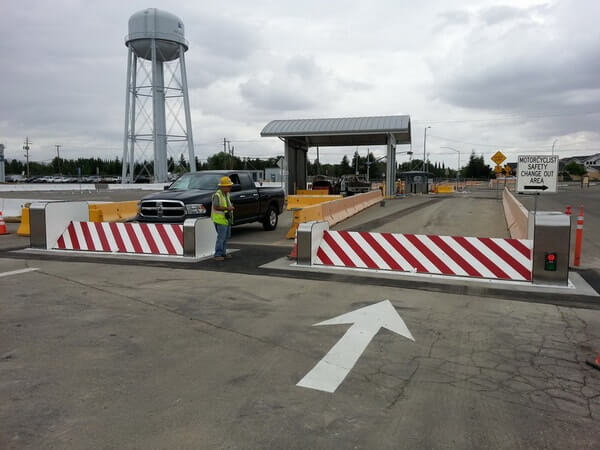What Is CPTED: Definition and Strategies
Crime prevention through environmental design (CPTED) is an approach that incorporates physical elements to help reduce crime rates and improve safety. It has proven itself an effective strategy and is widely promoted by law enforcement. Take a closer look at what CPTED is to optimize this approach.
Understanding Crime Prevention Through Environmental Design: What CPTED Is

CPTED is a crime prevention approach that uses elements of the built environment, including all human-made or modified spaces and structures that form a community, including buildings, roads, parks, and infrastructure. Urban planners, architects, and property managers use it to improve safety and deter crime. CPTED includes five overlapping strategies that establish clear boundaries, encourage approved use of spaces, and increase visibility.
The Five Strategies of CPTED Explained
The key strategies included in crime prevention through environmental design use the built environment to deter unwanted activity and help community members feel safe. A closer look at CPTED strategies shows that while each plays a distinct role in preventing crime, they are most effective when they work together in an overlapping fashion.
1. Natural Surveillance
Natural surveillance is a CPTED strategy that improves safety within an area by limiting opportunities for criminal activities. It involves designing activity spaces with physical features placed for maximum visibility, reducing the number of spaces a criminal could hide or conduct illicit activities.
2. Natural Access Control
Access control limits who and what can enter designated areas. This CPTED strategy works by making it very obvious when someone is in an area where they shouldn’t be. Pedestrian safety zones are excellent examples of using access control as part of a comprehensive safety design.
The following types of controls are effective at channeling people and cars along intended paths:
- Entrances and exits
- Fencing
- Gates and barricades
- Guard and ticket booths
- Landscaping
- Lighting
- Traffic barriers
Bollards are another effective access control. As bollard statistics show, they help prevent up to 100 crashes per day, so it is no surprise that they are an integral part of many CPTED approaches.
3. Activity Support
Strategies that support public activities help keep people engaged in public spaces. This improves visibility and increases safety. It also keeps the community engaged with the space, which gives them a vested interest in deterring and reporting crime. Examples of activity support include:
- Adequate lighting
- Benches or other seating
- Posted public hours
- Scheduled activities
- Site maintenance
- Walking and biking paths
It is important to note that activity support complements other CPTED strategies. Well-designed and maintained parks are more likely to attract visitors than neglected ones.
4. Management and Maintenance

Responsible parties should establish CPTED management plans and care standards to ensure the continued upkeep of managed spaces. Management of a designated area shows would-be criminals that the area is cared for, valued, and observed. It expresses both control over and ownership of the space. Furthermore, establishing and continuing CPTED maintenance standards safeguards the interests of the surrounding community.
5. Territorial Reinforcement
Territoriality establishes a clear line between public and private spaces. It reinforces ownership and gives the impression that an area is being watched. Using signs, barriers, fencing, lights, and similar strategies to establish property boundaries acts as a natural deterrent to criminals.
Where CPTED Is Used
Commercial, industrial, and residential spaces can all benefit from incorporating CPTED strategies. Many already use one or more without realizing it. Sectors that have widely adopted CPTED include:
- Parks: Well-lit, maintained spaces with clearly designated activity areas encourage approved use of parks, paths for walking and biking, and other public spaces.
- Residential developments: Low shrubs, security gates, beam barricades, and proper lighting improve security throughout neighborhoods and apartment complexes.
- Retail spaces: Proper maintenance, designated parking and pedestrian areas, and clearly marked hours of operation provide clear guidelines for acceptable use of retail and commercial spaces.
- Schools: Crosswalks, dedicated drop-off and pick-up zones with barriers, and access controls at entrances and exits help keep students and faculty safe in schools and universities.
- Transit stations: Clear pathways, guard stations, gates, booths, and signage all improve safety in transit stations and on public transportation.
Once you understand what CPTED is, you can see how virtually all public and private spaces, from government offices to residential homes, can benefit from implementing CPTED strategies.
What Is CPTED? Crime Prevention Strategies in Action
Delta Scientific is a global leader in access control solutions with over 50 years of experience. Our team understands what CPTED is and how to use it to secure public areas. We can help you improve overall safety by incorporating appropriate access control elements into your facility designs. Contact us to get started.
Recent Posts
Share This Story, Choose Your Platform!
